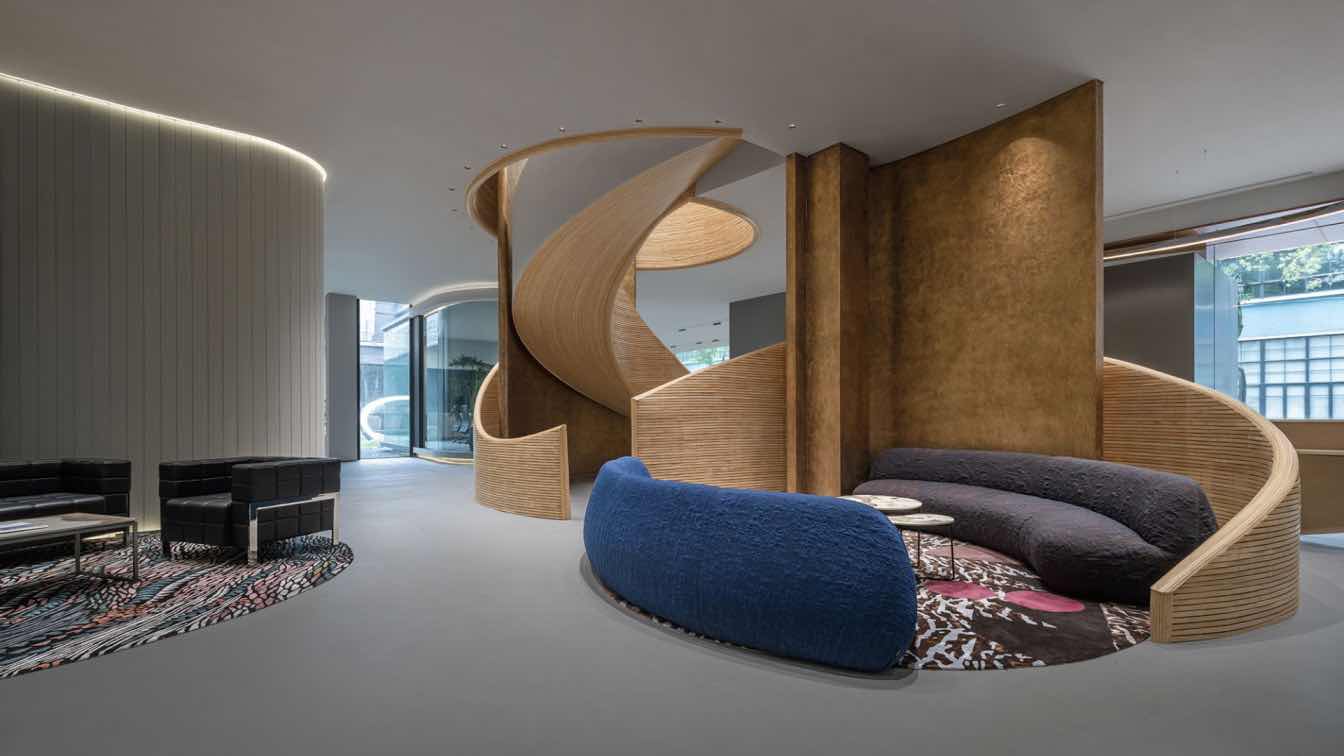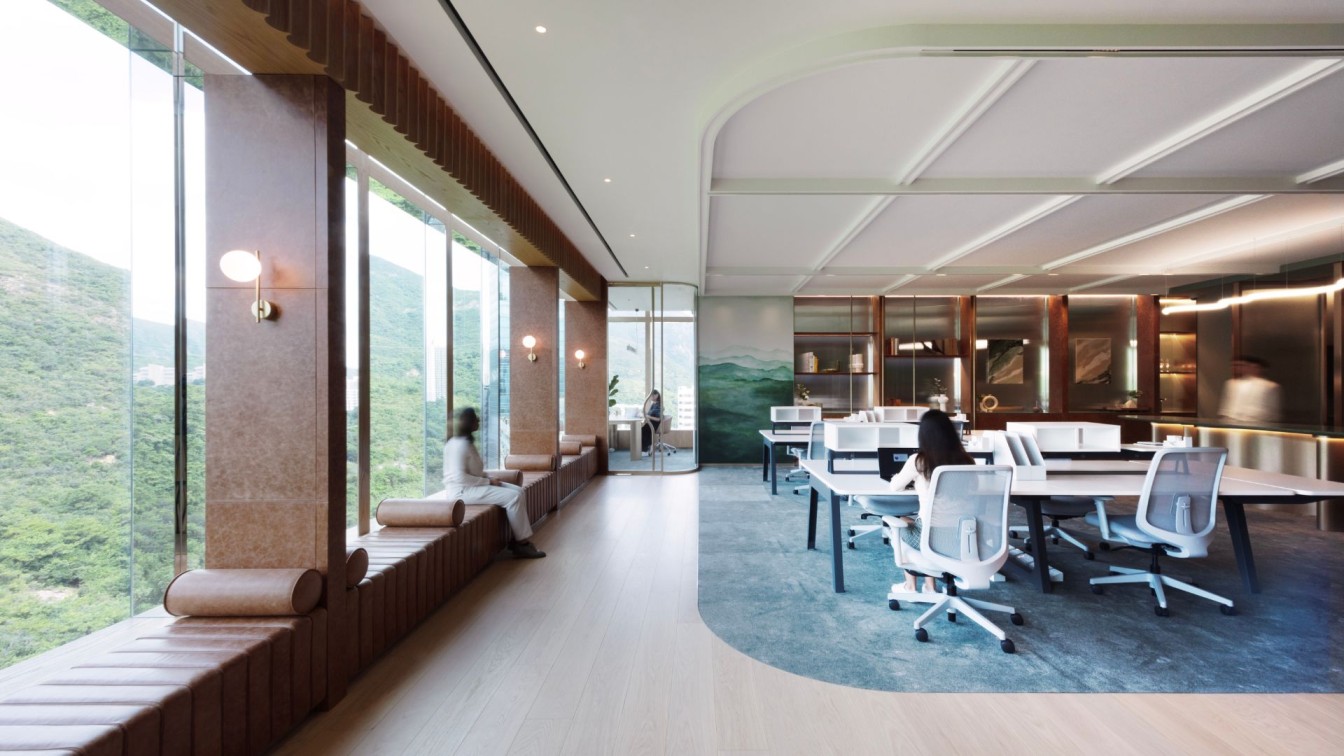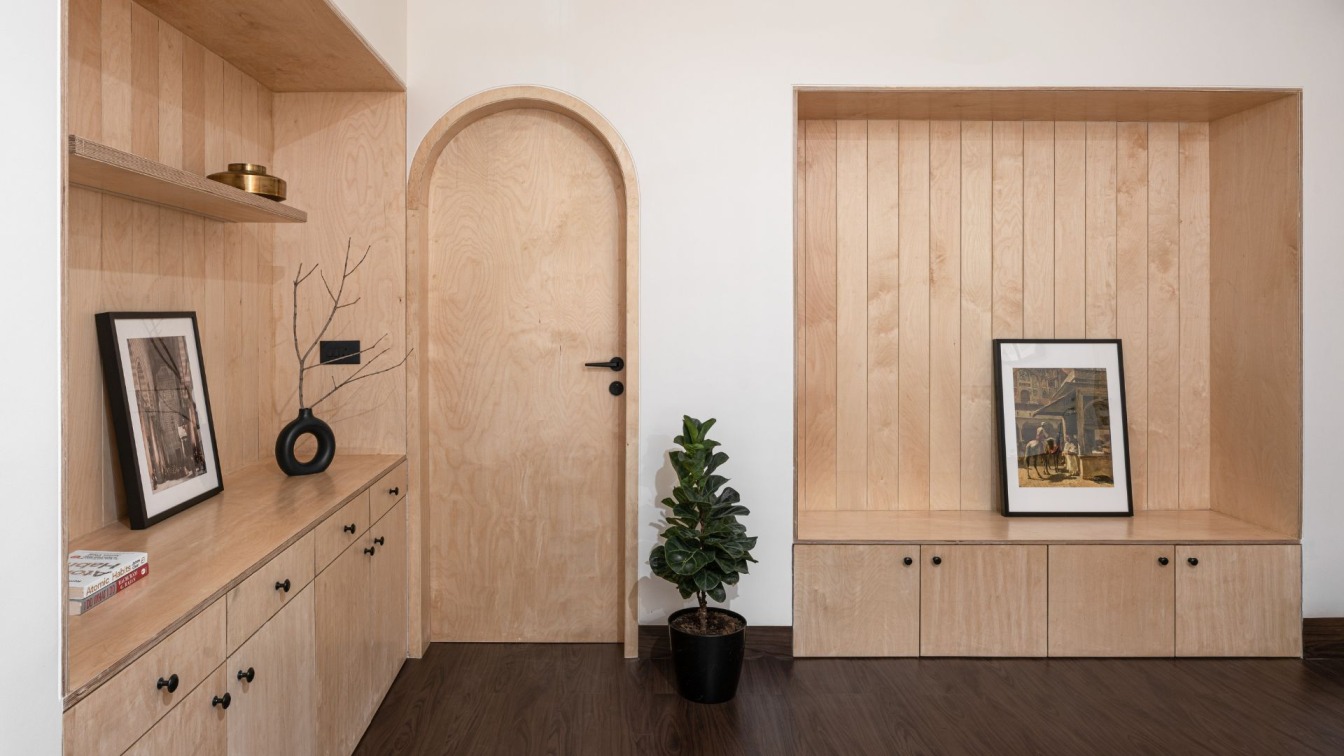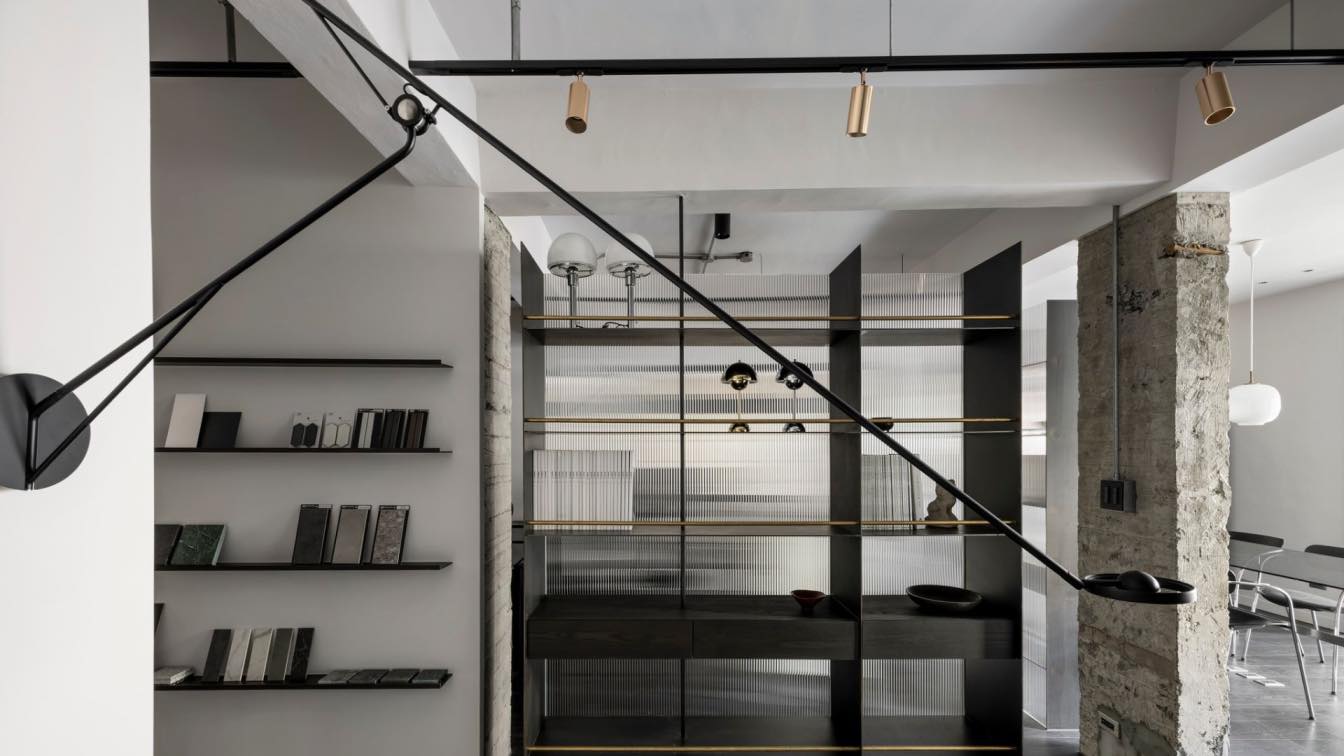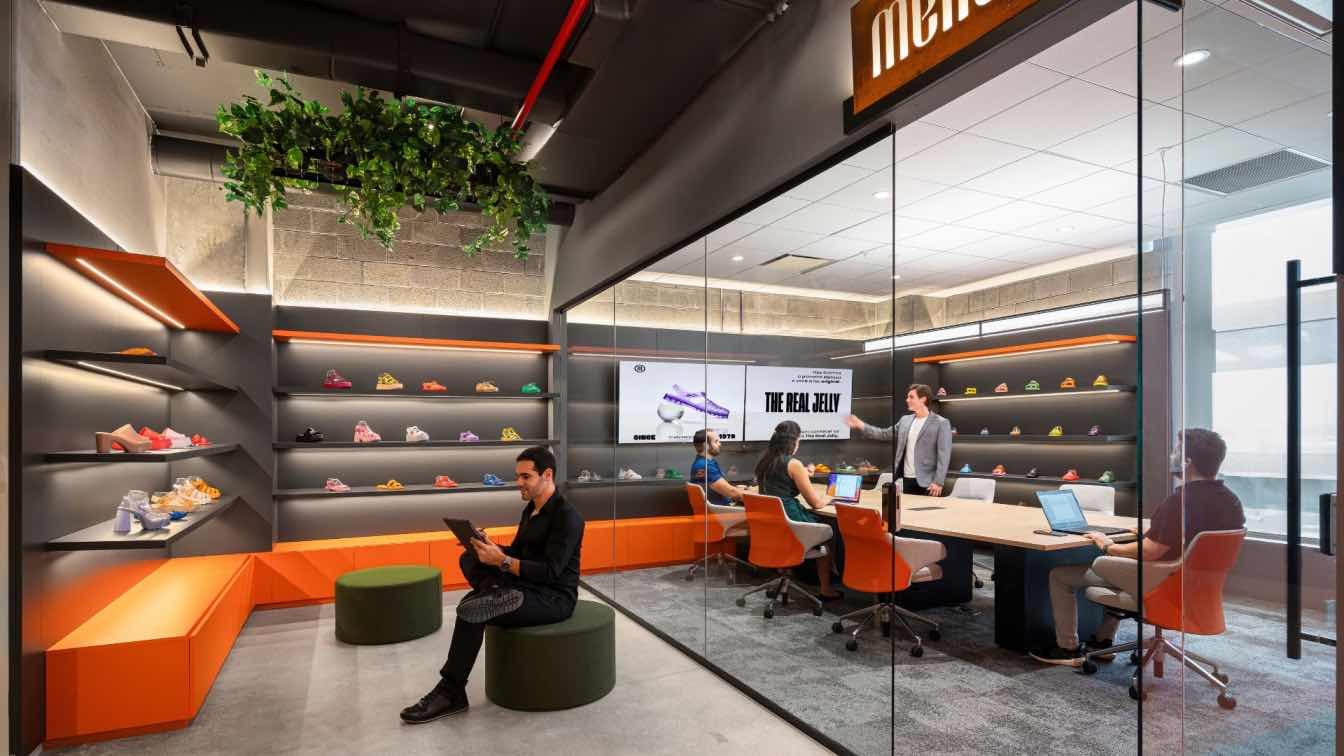CUN DESIGN: MAGIC PLACE|Reshaping the Future Imagination of Office Life
The MAGIC PLACE Office-Life Experience Hall is located in Building 10 of Xinyefang, Jing'an District, Shanghai, a historical building with a 70-year legacy. This new corporate headquarters and brand showroom has been crafted by MAGIC PLACE in collaboration with designer Cui Shu. Serving as a key platform for MAGIC PLACE, it offers a multifaceted space that merges cultural experiences, aesthetic enjoyment, artistic appreciation, and product co-creation. With years of practical experience and deep insights in office environment design, Cui Shu has designed a multifunctional, composite social space that harmoniously blends work with an artistic lifestyle, offering a fresh experience to the public.
Huge Bamboo Waves
In the renovation of the building where MAGIC PLACE is located, Cui Shu preserved the original structural features while directing the design focus on the interior space. By deconstructing fundamental materials such as metal, bamboo, wood, and cement, a fresh reinterpretation was introduced into the space. The reception desk, intricately woven from fine bamboo and wood, resembles a massive wave that wraps around the spiral staircase, spiraling like a vortex as it ascends to the second floor.
The high partition walls, coated with golden art paint, are surrounded by curved bamboo weaving. The building’s original beams are wrapped in mirrored stainless steel, which conceals their structural presence and allows the silver stainless steel and golden art paint to harmonize beautifully. This interplay of color and texture creates a restrained yet dynamic spatial emotion. Like the shimmering sea surface at sunrise, full of infinite possibilities, the bamboo curves act as transitional waves, creating the most striking visual focal point in the space.
The bamboo element extends to the second floor, creating a decorative surface for the partition walls. Unlike traditional solid decorative panels, the bamboo walls offer a more breathable quality and resonate beautifully with the century-old camphor tree visible from the window. This design serves as an excellent symbol of an ecological office environment.
Open Facade
The overall appearance of the building, while retaining the characteristics of its original structure, is enhanced by a new steel frame that introduces a modern cantilever design and offers a fresh perspective. The large floor-to-ceiling glass windows provide a panoramic view of the interior space, diminish the building's own visual presence, and highlight the harmonious beauty of the surrounding natural environment.
While preserving most of the open space, glass partitions were extensively used in the meeting rooms to enhance transparency and interactivity. The building features an inner courtyard, where the large glass structure allows natural light to penetrate the interior, creating a continuous circulation around the courtyard. At both ends of the conference area, transparent glass partitions are positioned, offering an open, transparent visual experience and significantly boosting the flexibility and comfort of the meeting spaces. In the central large conference room, a concrete column is retained, bearing the memory of New China's development. It serves as both a monument to the past and a gateway for reflecting on history from the present to the future.

Social, Interactive, Integrated
As a renowned domestic office furniture brand, MAGIC PLACE has always embraced the philosophy of "Social, Interactive, Integrated." Cui Shu has seamlessly incorporated this brand concept into the design of the exhibition hall, carefully considering both the flexibility and functionality of the space. The design creates various scenarios and integrates different furniture product combinations from MAGIC PLACE. This space serves not only as a furniture showroom but also as an office environment with practical, real-world applications.
The stepped event space at the entrance of the first floor is designed to host small-scale activities such as salon discussions and brand launch events. As visitors move through the space, a variety of social settings unfold around the inner courtyard. There’s no need for physical partition walls; instead, diverse furniture arrangements create distinct areas for different types of communication and negotiation within the open space. The floor-to-ceiling windows on both sides enhance the sense of transparency and flexibility in the space.
The second floor is dedicated to more private office spaces and meeting rooms. At the stairway entrance, a brass-colored reception bar with a sculptural design provides a social area for relaxation and conversation. This space offers those who have been working intensely a place to unwind and gather freely.
The office at the end of the suspended layout serves both office and medium-sized conference functions. The gray mirrored ceiling enhances the vertical height of the space, while the modern materials impart a sense of authority and cool sophistication. The glass windows offer a view of the lush, surrounding tree shadows, which helps to alleviate eye strain in the tense office environment. This natural view makes MAGIC PLACE feel like a treehouse seamlessly integrated with its natural surroundings.
The concept of future office life extends beyond just office furniture, focusing more on a deep understanding of customer needs and personalized preferences. The MAGIC PLACE Office and Life Experience Hall is not merely a display venue; it is an exploration and practice of future office and lifestyle concepts. By integrating aesthetics and art into the design, it transforms the "exhibition hall" into a real and natural living environment, aiming to create a more enjoyable and efficient ideal office space for people.





































































About
CUN DESIGN proposes the concept of enterprise operation space. It is the first space design team in China who combines the concepts of artistic creativity, technology office and green office to fulfill the efficiency of corporate office. It is the pioneer in the field of office design, releasing the latest trends on office space thinking.
With the development of CUN DESIGN, its focus on space design has gradually extended to a wider field of design. In recent years, CUN DESIGN has focused on helping real estate companies solve practical problems from the roots of industrial layout, so as to amplify the commercial value of real estate project.
Therefore, CUN DESIGN has specially proposed [solution design] method for real estate enterprises. In the early stage of design, it needs to understand the relevant policy orientation and clarify project design purpose and task through combining development needs and the operational characteristics of project. By analyzing the consumption trends of the end users, it conceives and establishes appropriate supply and demand relationships to create a core competitiveness that leads the development trend of industry.
Implementation in design. On the one hand, the space planning should fit operational management, which is an effective way to improve the operational efficiency and reduce the cost of operation and management. On the other hand, it measures the acceptance of target users, then creates the visual form of space accordingly. Through systematic thinking and judgment combined with multi-dimensional related design art categories, it can redefine the amazing space experience in the controllable construction cost, enlarging the core features of project, and setting up a standard for the development of industry.

